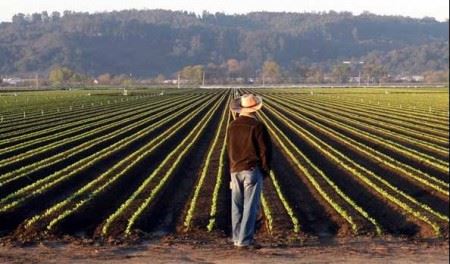What is something Robert F. Kennedy Jr., the state of California and big food and agribusiness companies all have in common? Give up? The answer is regenerative agriculture.
Regenerative agriculture – a system of farming principles and practices that aim to restore and enhance the health of ecosystems while producing food by focusing on improving soil health, increasing biodiversity, conserving water, sequestering carbon and enhancing ecosystem resilience – has been around for a long time but could go mainstream starting this year if these people and entities get their way.
Robert F. Kennedy Jr., President Trump’s nominee to head the Department of Health and Human Services (HHS) is a strong advocate for regenerative agriculture, viewing it as a means to enhance soil health, boost biodiversity and reduce environmental harm associated with conventional farming methods. He has expressed intentions to overhaul U.S. agricultural policies to support regenerative practices, aiming to phase out the use of synthetic pesticides and fertilizers. Kennedy believes that current industrial farming practices contribute to environmental degradation and public health issues, and he proposes shifting subsidies to encourage farmers to adopt regenerative methods.
As head of HHS, Kennedy would have a major platform to advocate for regenerative agriculture, which he has said he will do if the Senate approves his nomination. As head of HHS, Kennedy would be America’s chief food and health officer, including overseeing the FDA. He wouldn’t be directly in charge of agriculture – Trump has appointed Brooke Rollins for USDA Secretary – but would be in a strong position to promote regenerative agriculture using the numerous levers available to him as the leader of the giant health and human services agency.
Kennedy, who counts regenerative agriculture as one of his top agenda items, seems to have President-elect Trump’s ear and unless something unforeseen happens it looks to me like the Senate will approve his nomination to head HHS.
Like Kennedy, the state of California is also big these days on regenerative agriculture.
How big? Well, California has launched a major initiative and is actively working to establish a formal definition for “regenerative agriculture” to guide state policies and programs. This initiative is led by the California Department of Food and Agriculture (CDFA) and the California State Board of Food and Agriculture. The goal is to create a science-based definition that reflects the state’s diverse agricultural practices and ecosystems.
California farming regulators like regenerative agriculture for its potential to boost soil health, biodiversity and carbon sequestration. The state is considering putting significantly more funding into regenerative agriculture, which is why it wants to create a more formal definition of the age-old farming practice.
Indigenous peoples in the Americas practiced forms of regenerative agriculture. Numerous farmers in California and elsewhere practice it too. Most who do are able to sell their crops for a premium because “regenerative grown” has become a popular descriptor, similar to organic, on food packages. More and more food companies are testing the waters, creating brands featuring products grown via regenerative farming practices.
The California State Board of Food and Agriculture plans to adopt a draft definition of regenerative agriculture at its next meeting on January 7, 2025.

California Governor Gavin Newsom is supportive of putting more money behind regenerative agriculture because it fits in with his executive order to protect biodiversity and advance carbon neutrality through agriculture.
Expect a lot of talk about regenerative agriculture in California this year and added state initiatives and funding for the farming practice once the formal definition is established.
There is no legal definition for regenerative agriculture or “regenerative grown” like there is for organic. But as California goes, often so goes the nation. As such, don’t be surprised that once California has a formal definition for regenerative agriculture, other states adopt it, or a version of it. Additionally, perhaps Robert F. Kennedy Jr. will call for a national definition for the farming process he plans to advocate for if he becomes head of HHS?
Another major driving force behind the popularization of regenerative agriculture is big food and agribusiness companies.
Big food and beverage companies like PepsiCo, which owns the Quaker Oats brand and numerous other food and beverage brands, General Mills, Barilla, Coca-Cola, Danone, Hormel, Kellogg, Kraft-Heinz, Nestle, Fresh Del Monte, Land O’ Lakes, Mars and numerous others, along with agribusiness giants like Cargill, Syngenta, Bayer/Monsanto and others, are making major investments in regenerative agriculture. Many of these investments include paying growers to produce crops on their farmland using regenerative farming practices.
A growing number of food companies big and small also are producing branded food products which they are promoting as “regenerative grown,” using regenerative agriculture as a marketing tool similar to how brands have been using “organically grown” for many years now. These products fetch a higher margin for growers and food companies. They also cost considerably more at the grocery store.
Regenerative agriculture isn’t new. Many farmers use it or aspects of it every day. They’ve done so for personal and business reasons. For example, here in California family farmers like the Lundberg’s (rice) and Burroughs Family Farms, a diversified farming and vertically-integrated food maker in the Central Valley, have been doing regenerative agriculture successfully for generations. What is new though is the popularization of regenerative agriculture and its growing commercialization by big food companies. They see it as one way to meet their climate goals, as well as a way to potentially grow sales and profits.
Robert F. Kennedy Jr. sees regenerative agriculture as a way to eliminate pesticides and help him achieve his food reform goals.
For policy makers in California the primary goal of regenerative agriculture is to use it to help with its climate change goals, as well as to further position California as the leader in regenerative farming, ranching and food production.
For agri-food companies regenerative agriculture serves both environmental/climate change, business development and public relations goals.
These three – Kennedy, the state of California and agri-food companies – are all important stakeholders, for sure. But my concern is that the most important stakeholder, the farmer, isn’t being included in the process and discussion to the degree they should be because in order for regenerative agriculture to be something more than a buzzword, a favorite of policy makers or a food company marketing niche, it must be embraced by farmers because they are the ones who do the work.
My Job Depends on Ag Magazine columnist and contributing editor Victor Martino is an agrifood industry consultant, entrepreneur and writer. One of his passions and current projects is working with farmers who want to develop their own branded food products. You can contact him at: [email protected].







